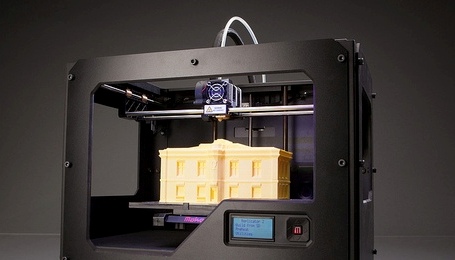
As time goes by, both in life and in work, we must evolve, we can’t stagnate despite our day-to-day actions being valid and working well. When related to the industrial sector, and more specifically to industrial manufacturing, this is just as valid.
The past years have seen the development of innovative manufacturing techniques which undoubtedly represent the future of technology. We are referring specifically to 3D printing. A young manufacturing technique, with an extremely promising future within the industrial world.
The Rapid Prototyping systems, or better known as 3D printers, machines which are capable of printing designs in 3D, creating parts or volumetric model from a computer design. The idea is to convert CAD files into real prototypes.
3D printers have two ways of printing. By compacting, in which the dust masses are compacted by layers, either using a laser which transfers energy to the dust leading it to polymerise or by using a binding ink which compacts the dust. The other printing method is by addition or injecting polymers, in which the material itself is added by layers. This method of printing uses thermoplastics such as ABS or PLA. ABS, also known as engineering plastic, is a thermoplastic which is highly resistant to blows. In turn, PLA is a polymer comprised of lactic acid molecules which is obtained from maize starch. Both of them are fully valid for this particular technique.
The range of possibilities which has opened up thanks to the appearance of 3D printers is vast, engineers trust 3D printers because the 3D models they produce not only represent their ideas to perfection but they also allow for testing their feasibility.
The advantages provided by this technology are countless, but above all we could highlight the time and cost, two of the most important and essential factors within the industry. Internally building or subcontracting a prototype can take days or weeks and can prove quite expensive. 3D printers can create this same part in just a few hours and with evidently lower labour costs. 3D printing can help us to detect errors which they are still relatively economic to fix. All the above will allow for performing more iterations in the designs in order to verify the models immediately.
Aside from this, 3D printing provides an optimal level of detail, the prototypes which are created do not deform, they withstand extensive tests and are sufficiently resistant to be used as functional models.
Moving further on in this world of 3D printing and focusing specifically on the world of casting, the truly interesting aspect of this technology is to directly create the model in sand, to be used for casting the particular part. The procedure is similar to that used in ABS models, manufacturing the mould in layers based on the design we have on the computer. The technology works by depositing a thin layer of sand and then injecting onto it a binding material only on the necessary areas for gradually forming the mould. Then, the sand which has not been bounds is cleaned and we obtain a sand mould which is ready to be worked with. The sand may vary, choosing from several of different sized grains, thus, obtaining different surface qualities and production times.
The sand casting moulds of the 3D printers provide significant and numerous advantages to the castings, ranging from better quality cast parts to a significant reduction in the execution times and the subsequent work. 3D printing of sand molds generated no obstacles whatsoever, even the more complex shapes, with all levels of notches, can be reproduced with complete precision and accuracy. During the sketch design stage, the parts are balanced by the computer. Thus, the cast part is much more precise and requires much less subsequent treatment. 3D printing is an exact replica of the computer model, while in artisan manufacturing there is always room for small differences.
The manufacturer can reduce the number of cast moulds stored, as well as saving on the maintenance of these moulds. Despite the above, this technology allows for significantly accelerating the supply time. For a client to arrive with a sample part and in a short period of time to confirm the creation of the model on the computer and then print the mould using 3D technology, to then cast this particular part, is an enormous advance in the manufacturing world. With this technological advance, one can even think of several different possibilities in so far as industrial implantation. Aside from the creation of sand moulds, there are other interesting possibilities such as the positioning several 3D printers in series for enabling continuous production of multiple models, but this time made from wax. A very interesting and efficient production possibility.
The 3D printing procedure will end up becoming the replacement for traditional manufacturing methods. Thanks to this technology, casting can significantly improve its competitive capacity. A world full of advantages, both for manufacturers and for clients.
3D printing, the future of technology.
Iván Rueda Puchet